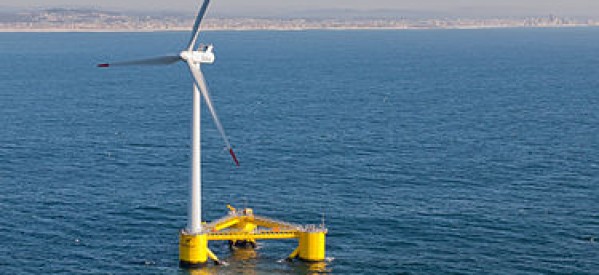Consortium to Deliver Japan’s First Floating Wind Farm

A recently announced project, known as Forward (Fukushima floating offshore wind farm demonstration), will be delivered by a consortium of 11 companies and join two floating scale pilots already in Japanese waters. Funded entirely by the Japanese Ministry of Economy, Trade and Industry, the project will have a leadership team provided by conglomerate Marubeni (Tokyo, Japan), with the University of Tokyo acting as technical advisor.
Another effort is a 300-MW project led by Hitachi Zosen Corp. (Osaka, Japan).
This is problematic, however, because Japan’s long coastline boasts relatively few locations where the water is shallow for some distance from shore, making them suitable for large fixed-foundation projects. Instead, water depths plunge quickly near the shoreline. The conditions are similar off the coasts of Portugal and the U.S. state of Maine, and research proceeds in both locations to develop cost-effective floating technology. Japan is following suit.
Forward will initially consist of three floating wind turbines and one floating power substation off the coast of Fukushima. The first stage, already underway, consists of one 2 MW floating wind turbine, the world’s first 66-kV floating power substation and an undersea cabling system. In the second stage, two 7 MW wind turbines will be installed between 2013 and 2015. Industrial development partners will include Mitsubishi Heavy Industries; shipbuilder Japan Marine United Corp. (formerly IHI Marine); Hitachi Zosen, which purchased Fuji Subaru’s wind turbine business; and Mitsui Engineering. All are based in Tokyo, Japan. Reportedly, Mitsui will be responsible for the foundations, wind turbines and blades for the initial phases.
The floating foundations, it is rumored, will be of the semisubmersible type. The project will ultimately include 143 floating wind turbines stationed 10 miles off the coast and could generate up to 1 GW of power as part of a national plan to increase renewable energy resources.
Project manager Takeshi Ishihara of the University of Tokyo has said in published reports that “this project is important — I think it is impossible to use nuclear power in Fukushima again.” For their part, political leaders within Fukushima prefecture have made it known that they intend for it to be completely energy self-sufficient by 2040.






